 |
 |
 |
| |
Uncontrolled HIV Tied to NHL But Not Hodgkins in Large D:A:D Study -
Differences in virological and immunological risk factors for non-Hodgkin and
Hodgkin lymphoma: The D:A:D study
|
| |
| |
HIV Drug Therapy, Glasgow 2016
Mark Mascolini
Lower CD4 count boosted chances of both non-Hodgkin lymphoma (NHL) and Hodgkin lymphoma (NHL) in a D:A:D study analysis [1]. But the study linked current and historical HIV replication only to higher NHL incidence.
Incidence of NHL has dropped in people with HIV but HL incidence remains stable [2]. This finding and other research, the D:A:D team noted, suggest that risk factors for NHL and HL may differ in people with HIV. To identify risk factors in a contemporary HIV population, they analyzed lymphoma incidence and predictors in D:A:D participants from when they entered the D:A:D study, their first CD4 count, or January 2004 until NHL or HL diagnosis, last visit plus 6 months, death, or February 2015. They excluded people with an NHL or HL diagnosis before baseline or with no CD4 count at baseline.
The D:A:D team used Poisson regression to identify lymphoma risk factors from a list including demographic variables, comorbidities, antiretroviral regimen and duration, current CD4 count, current viral load, and area under the curve (AUC) viral load (which determines cumulative exposure to HIV over time).
The analysis included 40,987 HIV-positive people with a median age of 40 years (interquartile range [IQR] 34 to 47) and a median baseline year of 2004 (IQR 2004 to 2006). Almost three quarters of these people were men, 62% had a baseline CD4 count above 350, and 51% had a baseline viral load below 500 copies. Half were taking antiretroviral therapy at baseline.
From 2004 to 2014/2015, NHL developed in 392 people for an incidence of 1.17 per 1000 person-years, while HL developed in 149 people for an incidence of 0.44 per 1000 person-years. As in prior studies NHL incidence dropped across the study period (unadjusted -13%, P < 0.01) while HL incidence remained stable (unadjusted -3%, P = 0.32).
In unadjusted analyses, every 2-fold higher current CD4 count was associated with a 16% lower NHL incidence (P < 0.01) and an 11% lower HL incidence (P < 0.01). Every 10-fold higher current viral load was associated with a 74% higher NHL incidence (P < 0.01) but did not have a significant impact on HL incidence. Every 10-fold higher AUC viral load was associated with an 81% higher NHL incidence (P < 0.01) but again did not affect HL incidence.
The adjusted Poisson regression analysis confirmed that lower current CD4 count independently raised chances of both NHL and HL, while higher current viral load and higher AUC viral load independently raised chances of NHL but not HL. This analysis isolated female gender as a predictor of lower NHL and HL risk. Every 5 years later calendar year cut the risk of NHL but not HL, and every 10 years older age raised the risk of NHL but not HL.
The D:A:D team concluded that current immunodeficiency (lower CD4 count) is associated with higher incidence of both NHL and HL. On the other hand, "ongoing viral replication may play a part in NHL development" but not HL. They suggested that early HIV diagnosis and management may lower lymphoma risk by trimming exposure to advanced immunodeficiency and uncontrolled HIV replication.
References
1. Shepherd L, Ryom L, Law M, et al. Differences in virological and immunological risk factors for non-Hodgkin lymphoma (NHL) and Hodgkin (HL): the D:A:D study. HIV Drug Therapy, Glasgow 2016. October 23-26, 2016. Abstract O224.
2. Patel P, Hanson DL, Sullivan PS, et al. Incidence of types of cancer among HIV-infected persons compared with the general population in the United States, 1992-2003. Ann Intern Med. 2008;148:728-736.


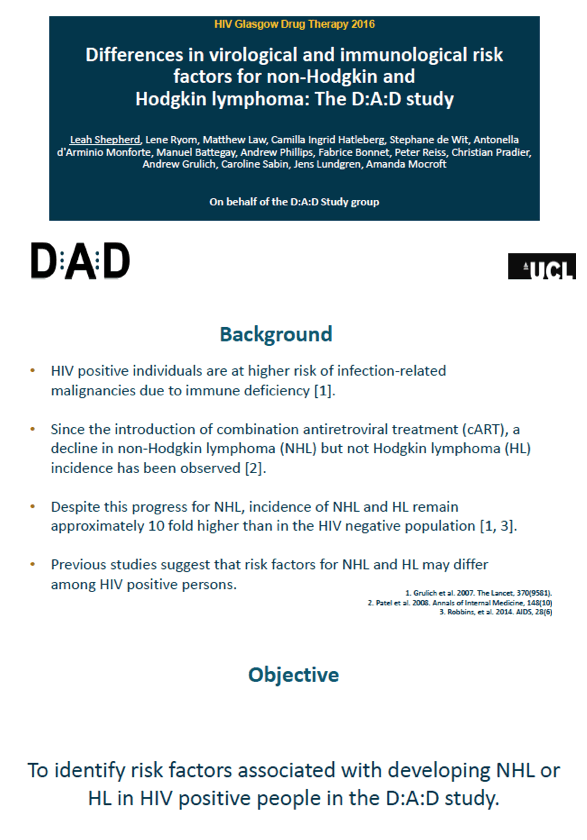
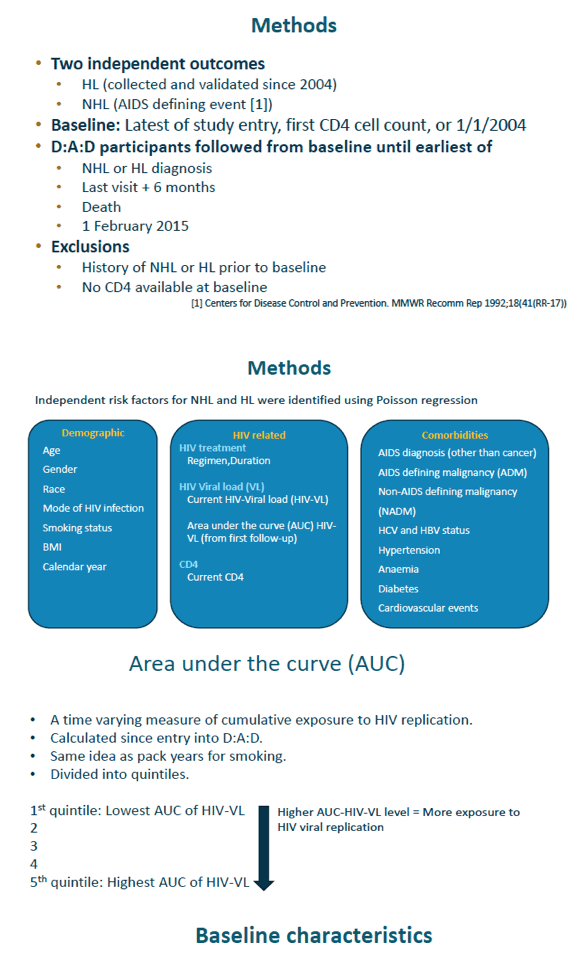
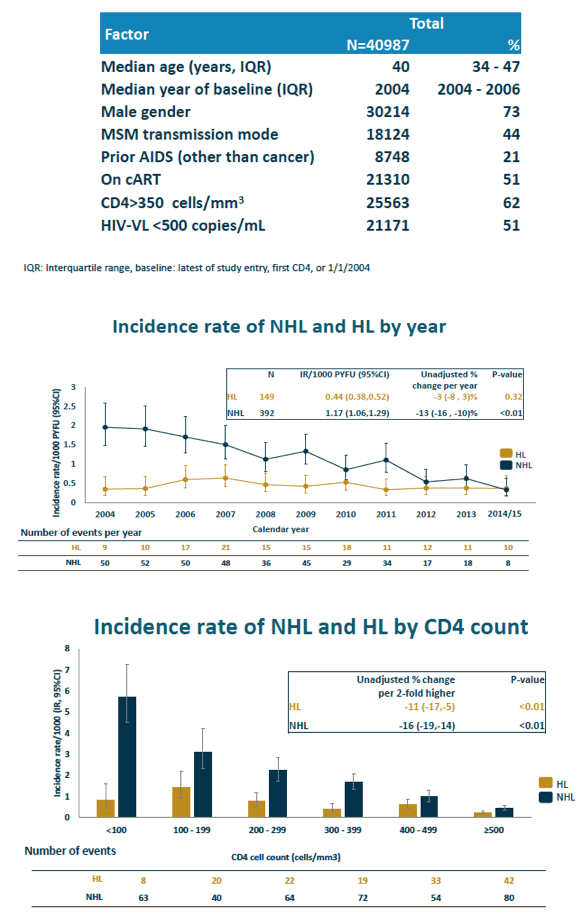
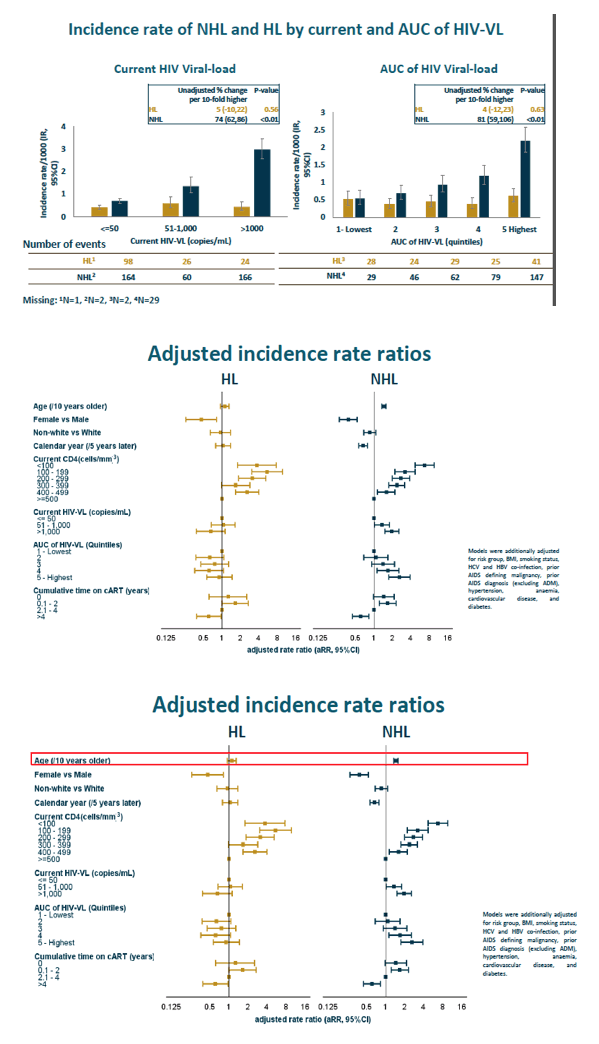
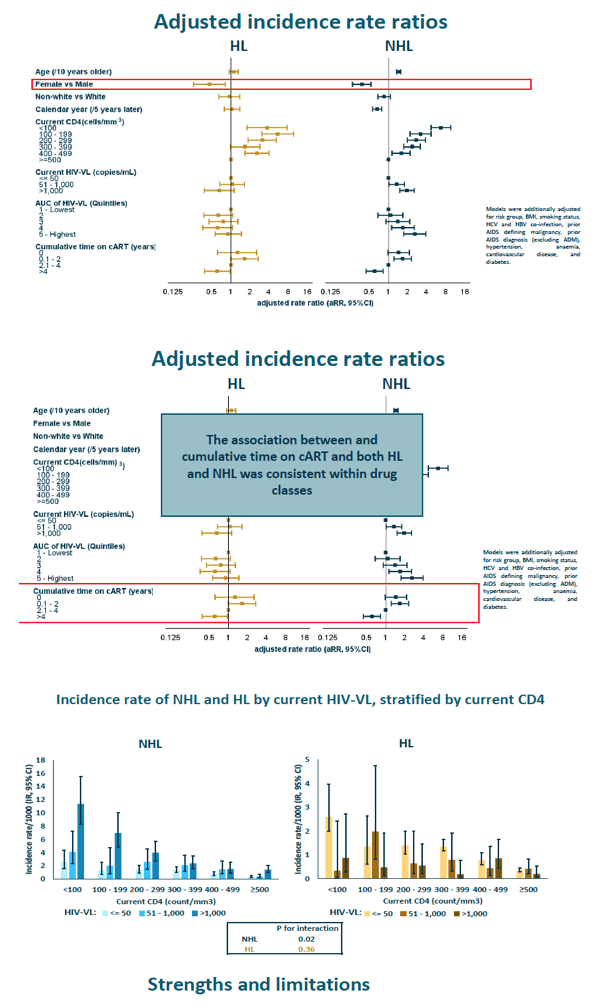
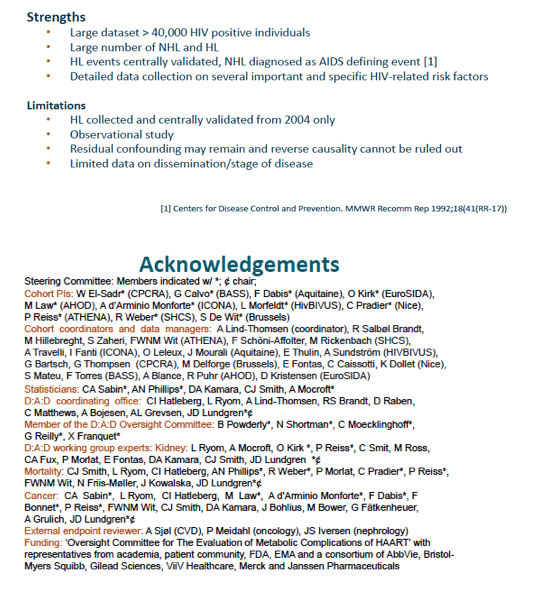
|
| |
|
 |
 |
|
|